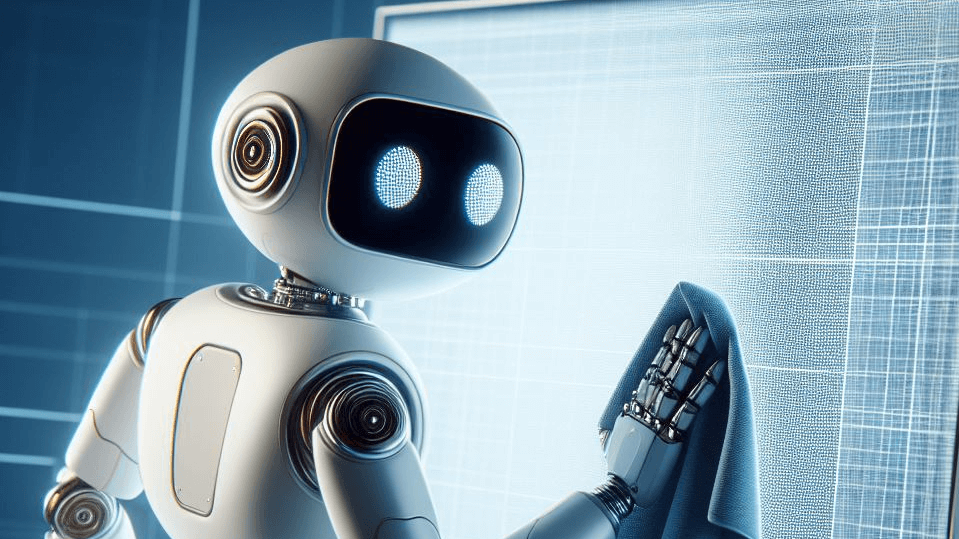
07 Dec Beyond Chatbots: Lesser Known Uses of AI
With the advent of powerful LLMs such as GPT-4, a new generation of AI chatbots has ushered in, creating a surge in popularity for smart chatbots. While these advancements have made these chatbots known to the wider public, this sudden shift in public interest have also overshadowed other use cases for artificial intelligence. As such, we have compiled a number of lesser known use cases for you to enjoy:
AI-Powered Cybersecurity:
According to IBM, the average cost of a single data breach in 2023 is around 4.45 million US dollars. As humans develop newer digital tools and become increasingly more connected, the cost of a data breach is projected to increase. The continuous evolution of technology intensifies the ongoing arms race between malicious actors and cybersecurity teams. This dynamic necessitates companies to continually devise countermeasures and use new technologies to stay ahead. This is where AI comes into play. AI enables companies to automatically monitor their systems for any anomalies, find the gaps in their defenses and combat threats faster than any human can react. According to IBM’s cost of breach report, organizations that invest in security AI and automation capabilities can identify and contain data breaches roughly 108 days faster, thereby avoiding an additional 1.76 million USD worth of damages resulting from a data breach.

Customer Segment of One:
The main goal of marketing is to present goods and services to the right customer. Traditionally, companies categorized customers into groups with common traits. With the emergence of AI, marketing departments can now track each customer individually. This allows brands to provide personalized services and precisely target advertisements to specific audiences. AI-powered content generators, capable of creating human-like voice, images, and videos, further enhance this trend. The future of advertising is poised to be hyper-customized with custom products, pricing and advertisements that treat each individual as unique with distinct preferences and characteristics.
Automating Scientific Advancements:
Artificial intelligence plays a pivotal role in scientific advancements as well, excelling in numerous tasks ranging from data analysis to complex problem-solving. Its ability to swiftly process vast amounts of information allows scientists to accelerate drug discovery and predict chemical interactions. For instance, DeepMind’s AlphaFold, a cutting-edge AI system, is tackling the once-deemed impossible task of mapping out every conceivable protein. By employing advanced algorithms, AlphaFold surpasses the output of entire research teams, showcasing the transformative power of AI in science. Similar technologies are also used in areas such as R&D, where AI helps optimize designs made by researchers. AI can warn about key points of failure, simulate systems althogether and even test multiple iterations of a design simultaneously. AI is also revolutionizing fields such as astronomy, where it helps process and analyze massive datasets from telescopes to identify celestial objects and phenomena. The Square Kilometre Array (SKA), an international effort to build the world’s largest radio telescope, will heavily rely on AI to manage the unprecedented volume of data it will generate.

Versatile Supply Chains:
From production to logistics, almost every piece of a supply chain is an optimization problem waiting to be solved. Incidentally, this is the exact type of situation that artificial intelligence excels at. By using AI systems, companies can predict shortages, adjust their orders and respond to crises more quickly. Another point to note is that an increasing number of processes within product cycles are being fully automated. A new trend that is expected to come up as a result of all this automation is dark factories. The concept behind dark factories is simple: With this increasing automation, there will be a point where so little human input is required in production that factories will cease having light sources, since machines do not require light to do their work.
Predictive Maintenance:
Maintenance is something companies have to manage constantly, and AI can optimize this process very effectively. Through the application of machine learning, organizations can construct predictive maintenance systems that derive valuable insights from historical maintenance and failure data. The integration of AI-driven predictive maintenance not only bolsters operational efficiency but also directly results in minimizing downtime, reducing costs, and ensuring the longevity of critical assets. Predictive maintenance also enables companies to take a more proactive approach to maintenance, allowing companies that use this technology to address potential issues before they escalate. Instead of waiting for equipment to fail, organizations can now anticipate and address potential issues, reducing the need for emergency repairs and the associated operational disruptions. This not only enhances the overall reliability of systems but also enhances worker safety by minimizing exposure to unexpected failures.

